A couple weeks ago we had quite a bit of rain and that brought down a lot of the maple leaves. Squirrels have been busy burying the fallen acorns all over the place.
Another sign that we’re now into Autumn are the blooming purple asters that can be seen along the county roads.
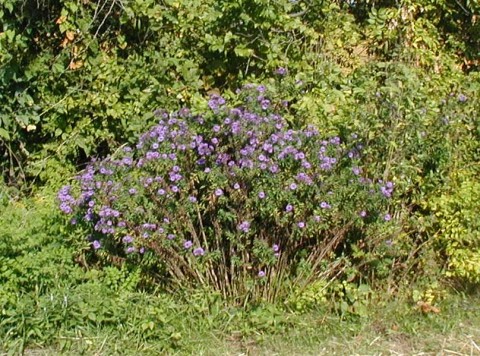
Perennially beautiful asters beside a Pennsylvania road. Photos taken 24SEP08.
Blooms of the New England Aster, Aster novae-angliae, are deeper purple than most asters. I look forward to seeing this three-feet tall bunch of asters each Fall as they are a very rich, dark purple. The photos don’t do the actual color any justice, but that’s what I get for taking pictures in bright sunshine.
Some of these roadside asters are light purple, almost to a white, while the flowers of New England Aster are a deep purple.
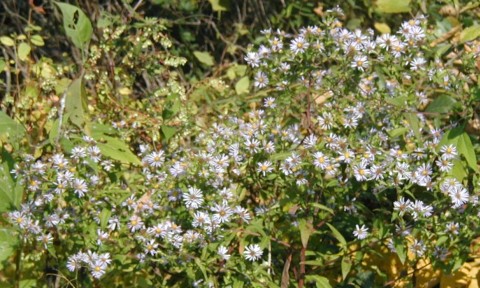
Light purple asters with sunny yellow disk flowers.
The golden yellow centers of these beautiful flowers contrast nicely with the colorful ray flowers. There may be 50 to 100 rays in one flower head – other aster species have fewer ray flowers. Once the flower has been open for a time and after the pollen-collectors have visited, the disk flowers change from a yellow to a reddish-brown color.
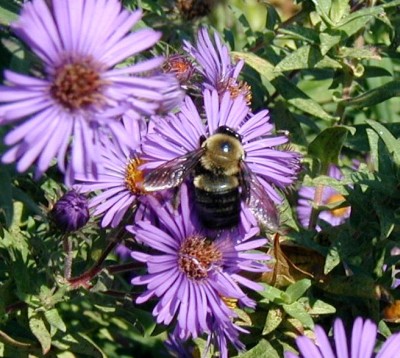
Bees were happily collecting pollen from the aster blooms.
Blooming of the asters takes place over a couple weeks so you’ll see some golden and some brown disk flowers, some blossoms drying up, and still others that are getting ready to open.
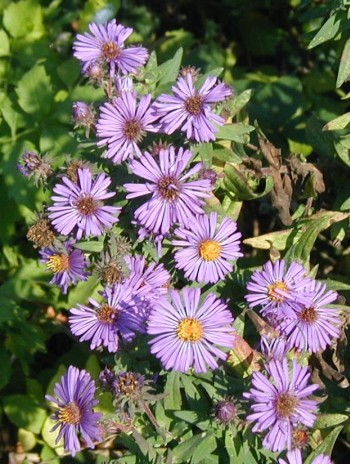
Purple asters in various stages of blooming.
Foliage of the New England Aster consists of short, lance-shaped, toothless, clasping leaves that alternate up the hairy stem. The leaves are placed on the tall stems rather thickly. Lower leaves dry out and turn brown while the aster is still blooming. Other aster species can be differentiated from the New England Aster by the shape and placement of their leaves.

Lance-shaped leaves of the New England Aster.
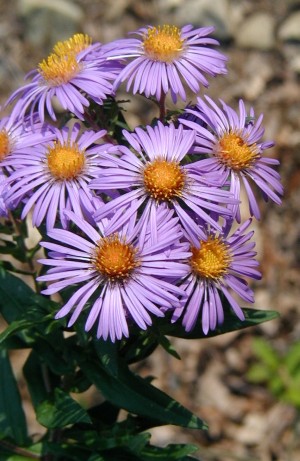
Sunny aster bouquet. Have a lovely day and stop to see the posies!